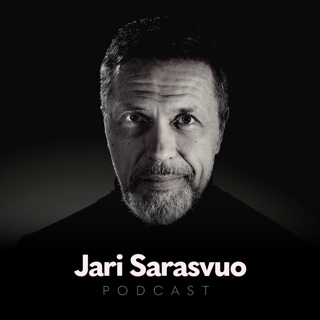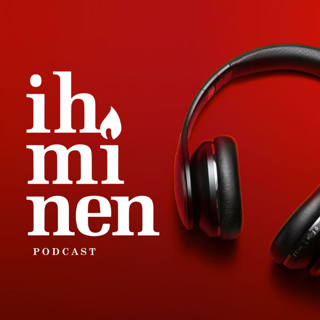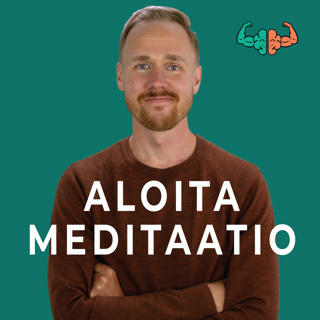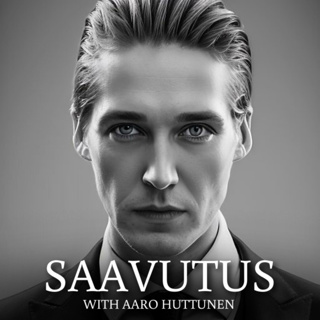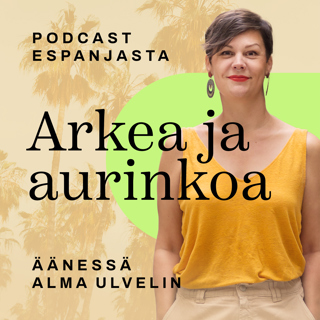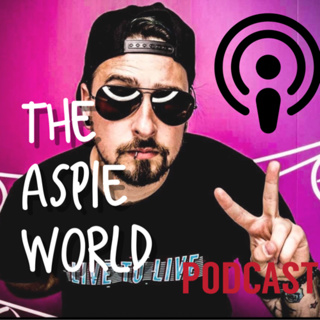
Autism and School — 5 Essential Items You NEED!
Starting school can be stressful for any child, but for autistic children, the classroom environment can feel especially overwhelming. In this episode of The Aspie World Podcast, I’m sharing 5 essential items every autistic student should have to make school life easier, calmer, and more manageable.Whether you’re a parent preparing your child for school, an autistic adult reflecting on your own experience, or a teacher wanting to create a more inclusive classroom, this episode is packed with practical tips, tools, and strategies to help reduce anxiety and sensory overload.The 5 must-have school essentials for autistic kidsHow to manage sensory challenges in the classroomSimple strategies to reduce overwhelm and improve focusTools that support executive function and help with transitionsWhy these items can make a huge difference for autistic studentsFrom noise-reducing headphones to visual schedules and fidget tools, these practical resources can help create a calmer, more supportive learning environment for autistic children and young people.Parents of autistic children preparing for schoolTeachers and educators looking to better support autistic studentsAutistic teens and young adults managing school stress and sensory overloadAnyone wanting to understand the daily challenges autistic kids face in educationIf you want your child — or yourself — to feel more confident and supported at school, these five simple tools are a great place to start.🎁 FREE Download: Get your Autistic Adult Bulletproof Brain Starter Kit and discover science-backed strategies to manage overwhelm, handle sensory stress, and build unstoppable confidence → www.bulletproofbrain.orgIf this episode helped you, please:✅ Subscribe to The Aspie World Podcast so you never miss an episode✅ Leave a review — it really helps more autistic adults and parents find this content✅ Share this episode with friends, family, or anyone who could benefit from better autism-friendly school strategiesTogether, we can make education more inclusive, less overwhelming, and more empowering for autistic students everywhere. 💙What You’ll Learn in This Episode:Who This Episode Is For:Resources & Support for Autistic AdultsLet’s Stay Connected
5 Syys 5min

If You Are Autistic You 100% Do This!
If you’re autistic, there’s one thing you almost certainly do without even realising it — and it’s far more common than you think. In this episode, we dive into one of the most fascinating, overlooked traits that almost every autistic person experiences in some way.From noticing the flicker of fluorescent or strip lighting when nobody else does to struggling with restless leg syndrome at the worst times, these subtle signs are deeply tied to the way autistic brains process the world.I’ll break down:Why this happens and how it links to sensory processing differencesWhy this trait is one of the most reliable indicators of autismHow it compares to similar ADHD traitsWhy recognising this sign can help identify autism in adults and childrenBy the end, you’ll understand exactly why these unusual signs are so closely connected to autism — and why almost every autistic person experiences them, even if they’ve never realised it before.🎁 FREE Autism Bulletproof Brain Book & Training → https://www.bulletproofbrain.org🎓 Autism Coping Secrets → https://www.learnautism.net/copingsecrets🧩 My Book: Autism for Adults → https://amzn.to/3LVNH5J🧠 ONO Fidget Roller (My Fave) → https://theaspieworld.com/ono🗞 50% OFF Autism Parenting Magazine → https://theaspieworld.com/apm💬 Online Therapy (sponsored) → https://theaspieworld.com/better📹 Watch More Content → https://theaspieworld.com/more⭐ My Top Recommendations → https://tinytaw.com/danrecommendsIf you’re reading this, you’re a legend! 💙Comment “I am autistic!” so I can notice you and reply back.🔗 Resources & Links Mentioned📢 Join the Conversation🔴 Subscribe & Follow
5 Syys 6min

10 Lesser Known Physical Signs of Autism In Girls
Are you wondering if some of the physical traits you’ve noticed could be linked to autism? In this episode of The Aspie World Podcast, we dive into 10 lesser-known physical signs of autism in girls that are often overlooked — even by professionals.Autism can look very different in females, and many autistic women and girls go undiagnosed for years because the physical, sensory, and behavioural signs don’t always match the stereotypes. Whether you’re an autistic adult, a parent, or someone seeking answers about your own journey, this episode is packed with practical insights, relatable examples, and supportive guidance.10 subtle physical indicators of autism in girls that are rarely discussedWhy autistic females often mask their traits and how this affects diagnosisHow understanding these signs can help with self-awareness and getting the right supportPractical tips for autistic adults navigating life after a late diagnosisThis isn’t about labels — it’s about understanding yourself better and finding the tools you need to thrive.Autistic adults looking for clarity and validationParents trying to understand their child’s traitsWomen and girls who’ve been misdiagnosed or overlookedAnyone curious about the less visible signs of autismIf you’ve ever felt like something about your experience didn’t quite “fit” the standard description of autism, this episode will help you connect the dots.🎁 FREE Download: Get your Autistic Adult Bulletproof Brain Starter Kit and learn simple, science-backed strategies to reduce overwhelm, manage sensory stress, and boost confidence → www.bulletproofbrain.orgIf you found this episode helpful, please:✅ Subscribe to The Aspie World Podcast so you never miss future episodes✅ Leave a review on your favourite podcast platform — it really helps more people find this content✅ Share this episode with friends, family, or anyone who could benefit from better autism awarenessTogether, we can build a stronger, more supportive community for autistic adults everywhere. 💙What You’ll Learn in This Episode:Who This Episode Is For:Resources & Support for Autistic AdultsLet’s Stay Connected
4 Syys 3min
![You DON'T Have Problems [Autism Mental Health Hack]](https://cdn.podme.com/podcast-images/4032A28450E8B67E56936F81B62CDC9A_small.jpg)
You DON'T Have Problems [Autism Mental Health Hack]
In this thought-provoking episode, we challenge the way we think about problems, worry, and anxiety—especially in the context of autistic mental health. Dan, who lives with autism, ADHD, and OCD, offers a refreshing and empowering mindset shift: What if you don’t actually have problems... only potential solutions?By reframing problems as opportunities for solutions, we can begin to break the mental cycle that leads to worry and anxiety—a common struggle for many autistic adults. This episode offers a simple but powerful mental health hack that can help you regain control of your thoughts, build emotional resilience, and reduce anxiety.🎯 In this episode, you’ll learn:Why problems and solutions are two sides of the same coinHow to reframe anxiety-inducing thoughts through perspectiveThe link between autistic anxiety and overthinkingHow this mindset can improve self-regulation and reduce overwhelmA practical thought exercise to help you stop spiraling and start solvingWhether you’ve been diagnosed recently or you’re deep into your neurodivergent journey, this episode is a supportive boost of perspective for anyone living with autism spectrum disorder.📘 Resources Mentioned:• Free Autism Life Hacks Book → http://www.autismhacks.net• Online Therapy (Sponsored) → https://betterhelp.com/theaspieworld/• 50% Off Autism Parenting Magazine → http://bit.ly/AUTISMPM• Autism Alert Card → [Link]• Autism Stim Toys & Gadgets → http://bit.ly/StimToys• Noise-Cancelling Headphones → http://amzn.to/2goVuKf• Sensory Toy Bundle → https://amzn.to/36zbBiA✨ If this episode resonated with you, please subscribe, leave a review, and share it with someone in your autism community.💻 Want more tools to support your mindset, routine, and emotional health? Visit www.LearnAutism.net to explore online programs created just for autistic adults.#AutismAcceptance #AutisticAdults #AutismAndAnxiety #NeurodivergentMindset #ReframeYourThinking #AutismSupport #LearnAutism #AutismPodcast #MentalHealthForAutistics
28 Kesä 7min

The Wacky World Of ADHD With Connor DeWolfe
n this high-energy and entertaining episode, we dive into the wild and relatable world of ADHD with none other than TikTok and YouTube sensation Connor DeWolfe (@connordewolfe). Known for his hilarious yet insightful takes on neurodivergence, Connor joins Dan—who lives with autism, ADHD, and OCD—to unpack what it’s really like living with an ADHD brain in a world that doesn’t quite get it.From time blindness and task switching to hyperfocus and impulsivity, this conversation is filled with real talk, laughter, and valuable insights for anyone navigating ADHD, autism, or both. If you’ve ever felt misunderstood, scattered, or like your brain is on a rollercoaster—you’re in the right place.🎯 What You’ll Learn:What ADHD actually feels like day-to-dayHow autism and ADHD can show up together (and clash!)Connor’s favorite ADHD life hacks and coping toolsWhy humor and creativity are powerful neurodivergent superpowersEncouragement for embracing your brain and owning your storyWhether you’re autistic, ADHD, AuDHD, or just curious, this episode is both fun and deeply relatable.📘 Resources & Mentions:• Free Autism Life Hacks Book → https://www.autismtips.net• Autism for Adults Book → https://amzn.to/3LVNH5J• Online Therapy (Sponsored) → https://link.heropost.io/BH• 50% Off Autism Parenting Magazine → https://link.heropost.io/APM✨ Love this episode? Be sure to subscribe, leave a review, and share it with a fellow neurodivergent legend in your life.💻 For more tools and support tailored specifically for autistic adults, visit www.LearnAutism.net — offering online programs to help you thrive, not just survive.#ADHDAwareness #AutisticAdults #ConnorDeWolfe #NeurodivergentVoices #AuDHD #ADHDHumor #ADHDTips #LearnAutism #AutismPodcast #AspergersSupport
28 Kesä 31min

The Role of Diet in Autism (SHOCKING)
In this insightful episode, we explore the connection between diet and autism, and how the food we eat can play a significant role in managing autistic traits and overall well-being. Dan—who lives with autism, ADHD, and OCD—shares his personal experience and research into how dietary choices can impact gut health, sensory issues, and gastrointestinal discomfort, which are common challenges for many on the autism spectrum.We unpack the science behind the autism and gut connection, discuss selective eating, and look at best practices for finding foods that support both comfort and energy levels. Whether you’re autistic or supporting someone who is, this episode offers practical, easy-to-follow advice on navigating autism-friendly nutrition.🎯 Topics Covered:How diet can affect autistic sensory sensitivities and digestionUnderstanding autistic metabolism and unique dietary needsTips for managing selective eating and food aversionsBest practices for creating a gut-friendly, supportive food planWhy no one-size-fits-all diet exists for autism—and how to personalize your approachThis is a must-listen for anyone interested in the intersection of autism, health, and nutrition, especially for autistic adults seeking relief from food-related discomfort or low energy.📘 Resources & Recommendations:• Free Autism Life Hacks Book → https://www.autismtips.net• Autism for Adults Book → https://amzn.to/3LVNH5J• Online Therapy (Sponsored) → https://link.heropost.io/BH• 50% Off Autism Parenting Magazine → https://link.heropost.io/APM✨ Found this episode helpful? Please subscribe, leave a review, and share it with someone who may benefit from autism-friendly diet tips.💻 Visit www.LearnAutism.net for empowering online programs created specifically for autistic adults, designed to help you thrive in daily life.#AutismDiet #GutHealthAndAutism #AutisticAdults #AutismSupport #NeurodiversityNutrition #AutismAndFood #SelectiveEating #LearnAutism #AutismPodcast4owindow.__oai_logHTML?window.__oai_logHTML():window.__oai_SSR_HTML=window.__oai_SSR_HTML||Date.now();requestAnimationFrame((function(){window.__oai_logTTI?window.__oai_logTTI():window.__oai_SSR_TTI=window.__oai_SSR_TTI||Date.now()}))
26 Kesä 3min

What You Need to Know About Sensory Processing Disorder
In this important episode, we take a deep dive into Sensory Processing Disorder (SPD)—a condition that frequently overlaps with autism spectrum disorder but is often misunderstood or overlooked. Dan, who lives with autism, ADHD, and OCD, breaks down the key things every autistic adult, caregiver, or ally should know about SPD and how it impacts daily life.From struggling with certain sounds, lights, and textures to feeling overstimulated or under-stimulated, sensory processing challenges can affect everything from communication to focus to mental health. This episode offers practical insight and sensory-friendly strategies for navigating the world with more comfort and confidence.🎯 What You'll Learn:What Sensory Processing Disorder is and how it relates to autismCommon signs of sensory sensitivities in autistic adultsThe difference between sensory seeking and sensory avoidingReal-world tips to manage sensory overloadTools that can help (like noise-cancelling headphones and sensory aids)Whether you’ve just discovered you’re autistic or you’ve been managing SPD for years, this episode brings clarity, validation, and support.📘 Helpful Resources Mentioned:• Free Autism Life Hacks Book → https://link.heropost.io/autismtips• Online Therapy (Sponsored) → https://link.heropost.io/BH• 50% Off Autism Parenting Magazine → https://link.heropost.io/APM• Autism Alert Card → https://link.heropost.io/AAC• Noise Cancelling Headphones → http://amzn.to/2goVuKf✨ If this episode helped you better understand sensory processing or autism, please subscribe, leave a review, and share it with your neurodivergent community.💻 Looking for more autism-friendly tools and guidance? Visit www.LearnAutism.net to explore online programs created specifically for autistic adults—from daily routines to sensory regulation.#SensoryProcessingDisorder #AutisticAdults #AutismAndSPD #NeurodivergentSupport #SensoryOverload #AspergersSupport #LearnAutism #AutismAwareness #AutismPodcast
26 Kesä 3min

Stimming Do You Vocal Stim? MUST SEE Autism And ADHD
In this eye-opening episode, we go beyond the basics of stimming and explore a lesser-known but just as important type: vocal stimming. While many people associate stimming in autism and ADHD with physical actions like rocking, hand-flapping, or leg bouncing, there’s another side to it—repetitive vocal behaviors like humming, echolalia, or repeating certain words or sounds.We break down what self-stimulatory behavior (stimming) is, why it happens, and how both physical and vocal stimming serve as vital coping tools for neurodivergent individuals—especially those with autism and ADHD dual diagnosis. Whether it's calming anxiety or expressing joy, stimming is a valid and important part of many autistic lives.🎯 In this episode, you’ll learn:What stimming really means and why it’s not “just a habit”The difference between voluntary and involuntary stimmingWhat vocal stimming looks and sounds likeWhy recognizing and embracing stimming is part of autism acceptanceTools that support healthy stimming (like the ONO Roller + Audio Stim Pack!)📘 Helpful Resources:• Free Autism Life Hacks Book → https://www.autismtips.net• ONO Roller for Fidgeting → https://link.heropost.io/TAWONO• Audio Stim Pack Download → https://shoptly.com/i/b32s• Online Therapy (Sponsored) → https://link.heropost.io/BH• 50% Off Autism Parenting Magazine → https://link.heropost.io/APM• Autism for Adults Book → https://amzn.to/3LVNH5J✨ If this episode helped you feel seen or supported, please subscribe, review, and share it with others in the autism community.💻 Looking for more tailored tools and support? Visit www.LearnAutism.net to explore online programs made specifically for autistic adults, designed to help you thrive with confidence.#AutismStimming #VocalStimming #AutisticAdults #ADHDandAutism #NeurodivergentSupport #SelfRegulation #AutismAcceptance #LearnAutism #AutismPodcast4o
25 Kesä 9min










